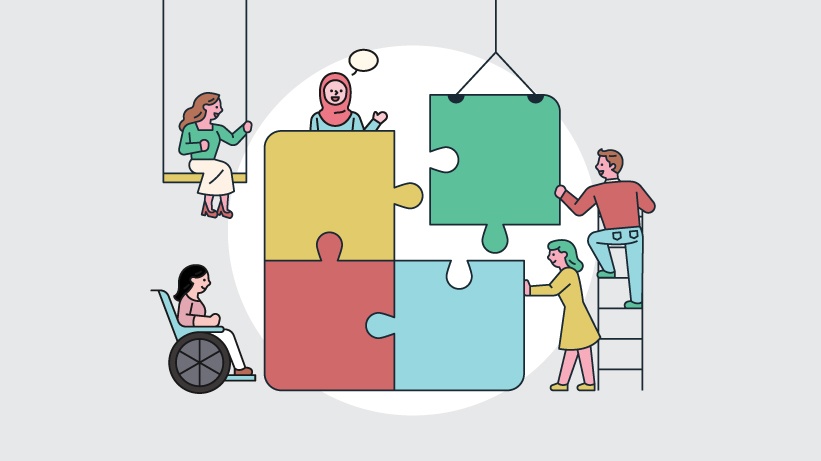Using The UDL Framework In Online Education
While online learning has many benefits, it can also be a challenging mode of education for some learners, especially those with disabilities. This is where Universal Design for Learning (UDL) comes in. UDL is a framework for designing and delivering learning experiences that are accessible to all learners, regardless of their abilities. It is based on the principle that there is no one-size-fits-all approach to learning and that every learner has unique needs and preferences. Therefore, UDL advocates using multiple means of representation, expression, and engagement to ensure all learners can access, understand, and participate in the learning experience. This article will discuss why every institution should use UDL for online courses. We will explore the benefits of UDL, the challenges that learners with disabilities face in online learning, and how UDL can help overcome these challenges.
The Benefits Of UDL
UDL has many benefits for both learners and instructors. First and foremost, UDL ensures that all learners can access and participate in the learning experience. This is particularly important for learners with disabilities, who may face barriers to learning in traditional classroom settings. Using UDL, instructors can create learning experiences tailored to each learner's needs and preferences, allowing them to learn and succeed on their terms.
Secondly, UDL promotes learner engagement and motivation. By providing learners with multiple means of representation and expression, instructors can help them find ways to engage with meaningful and relevant content to their interests and abilities. This can help increase their motivation to learn and improve their academic performance.
Finally, UDL can help improve the overall quality of online courses. By designing courses that are accessible and engaging for all learners, instructors can create learning experiences that are more inclusive and effective. This can help institutions attract and retain students and enhance their reputation as a provider of high-quality education.
Challenges Of Online Learning For Learners With Disabilities
While online learning has many benefits, it can also be challenging for learners with disabilities. Here are some of the challenges that they may face:
- Accessibility
Online courses may not always be accessible to learners with disabilities. For example, video content may not have closed captions, making it difficult for learners with hearing impairments to follow along. - Engagement
Learners with disabilities may struggle to engage with online courses, especially if the content is not presented meaningfully. - Support
Learners with disabilities may require additional support to succeed in online courses, such as assistive technology or specialized instruction. They may need this support to keep up with the course content.
How UDL's Benefits Can Overcome Said Challenges
UDL can help overcome the challenges that learners with disabilities face in online learning. Here's how:
- Accessibility
UDL advocates for using multiple means of representation, which can help ensure that online courses are accessible to all learners. For example, providing closed captions for video content can make it accessible to learners with hearing impairments. - Engagement
UDL promotes learner engagement by providing multiple means of engagement. For example, learners may be able to choose from different types of assignments or activities to find one that is meaningful and relevant to their interests and abilities. - Support
UDL encourages instructors to provide additional support to learners who need it. For example, instructors may offer individualized instruction or provide assistive technology to help learners with disabilities access the course content.
How To Implement UDL In Online Courses
Implementing UDL in online courses requires a systematic approach. Here are some steps that institutions can take to implement UDL:
- Educate instructors
The first step to implementing UDL in online courses is to educate instructors on what UDL is and how it can benefit learners. Institutions can offer professional development workshops or training sessions to help instructors understand the principles of UDL and how to apply them in their courses. - Create UDL guidelines
Institutions can develop UDL guidelines or checklists to help instructors design and deliver courses that are accessible and inclusive. These guidelines can cover topics such as accessibility, engagement, and support and provide specific examples and resources for instructors. - Provide accessible technology
Institutions can provide instructors, and learners access to assistive technology and other tools supporting UDL. This can include screen readers, captioning tools, and adaptive software to help learners with disabilities access and engage with course content. - Collaborate with disability services
Institutions can collaborate with their disability services office to ensure learners with disabilities receive the support they need to succeed in online courses. Disability services staff can provide instructors with guidance on how to make courses accessible and can work with individual learners to provide accommodations and support. - Evaluate course accessibility
Institutions should regularly evaluate the accessibility of their online courses to ensure that they meet all learners' needs. This can include conducting accessibility audits, soliciting learner feedback, and reviewing course materials to ensure they meet accessibility standards.
Conclusion
Every institution should use UDL for its online courses. UDL provides a framework for designing and delivering learning experiences that are accessible and inclusive for all learners, including those with disabilities. Using UDL, institutions can create courses tailored to each learner's needs and preferences, promoting engagement, motivation, and academic success. Implementing UDL in online courses requires a systematic approach, including educating instructors, creating UDL guidelines, providing accessible technology, collaborating with disability services, and evaluating course accessibility. By taking these steps, institutions can ensure that their online courses are accessible and inclusive for all learners, promoting the highest possible academic achievement and success.







